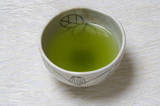In the absence of a universal parenting handbook, parents often devise their own ways of disciplining children. Although it can be quite a task for parents, doing it the right way is even more challenging. While parents mostly resort to easier weapons such as screaming, slapping and telling them to do things a certain way, there are more ways than one to get the point across.
Recently, the UK-based theatre company London Talents staged a performance in Mumbai addressing parents and teachers on how to make their children understand that sharing and caring are essential. Jumana Kapadia, director of London Talents, shares a few tips on how to role play to discipline kids.
Role play
Children have feelings and instinctive self-esteem. If you tell your child that he’s selfish for not sharing his toy, and punish him by forcing him to hand it over to another child, you’ll foster resentment, not generosity. Kapadia says, “To encourage sharing, use positive reinforcement rather than admonishment. Keep in mind that it’s okay for your child to hold back for some time and he does not have to hand over his things at that very moment.
Acknowledge to your child that it is, or can be hard to share. “Instead of scolding or pulling it away from him to give his toy over, empathise with him/her. Tell them, ‘I know it can be hard to share and your toy is very special to you, but you know your friend feels sad when you let him play with your toys and I am sure your intention is not to make your friend sad’” says Kapadia. For instance, if your child is used to sitting at one corner of the table most of the time, he/she seems to be taking ownership of it. Instead of asking them to get up and move, encourage them to be a character that they can associate with. This will boost their egos and self esteem. “Tell the little girl that she’s a queen and that she should share her throne with others. This gives each child a feeling that they are important and that they are getting respect.”
Feelings into words
Help your pre-schooler put their feelings into words. When they’re not being generous, ask what’s wrong. Kapadia provides a reference to the recent show. “For instance, there’s a story where the girl did not want to give her boxes away to the boy. That’s because each of her boxes had a specific purpose in the story. Some were hillsides, some were goats, one a river and the other a troll,” she says. “To an adult these boxes may all look the same, but to the child each box has been invested in and is needed for the role they have given it. She has to learn to adapt her game to the situation. The situation is that her friend needs more boxes to build his bridge. Eventually, they help each other, share the boxes, build a magical bridge and they are rewarded with their own special troll and a goat box.”
Use hand puppetry
If your child is thoroughly possessive about a toy that his playmate wants, chances are he’s thinking, “It’s either him or me”. The concept of sharing the toy may not even have occurred to him. Encourage the child to tell a story using the toy. Kapadia says, “Ask the children to use their hands as puppets. Give each hand a character. Now ask the children to re-enact the story making the toy part of the story. For example, if they have building blocks, build a truck, use one hand as the driver and the other as its friend, and drive the truck to the child’s friend.” Once the blocks have reached the friend, chances are that the child may demand to have them back. Kapadia says, “Accept that a child’s patience level is lesser than that of an adult. Tell your child, ‘I know you really want to play with it, while you are being good and waiting, can I help you find something else to do?” Such a statement makes the child feel supported and understood, not abandoned. When this strategy is used, children are often happy to wait longer.
Explore their imagination
Kids running away from mathematical problems are fairly common. So if they have received a worksheet on simple addition and subtraction and are finding it tedious to work it out involve their toy and build a story around it.
Parents also often face the arduous task of running behind their child with boring healthy food. Presentation of food is your ticket to freedom. To tackle a fussy eater, present the food in a fun manner — create a hat out of a sandwich, introduce bitter gourd and chappati as a smiley face. Try eating with your child and build stories around food, sharing ideas. So a morsel of sabzi-roti can transform from a dinosaur to a rocket to sand to anything while it’s on its way to your child’s mouth. “While eating dal-roti, treat the dal like a river and the roti as a boat, so the child will have to dip the roti into the dal for each bite and treat it like play,” she explains.
Brushing teeth can be fun
If your mornings are spent convincing the little one to brush its teeth, change their perception. Kapadia says, “If your child enjoys eating pizza, tell them that their mouth is a pizza base and the tooth paste is a sauce, and by brushing he/she’ll be pulling out the toppings. Ask them to explain the taste. By making the conversation light and fun for them, you’ll turn a difficult chore into a fun habit.”



